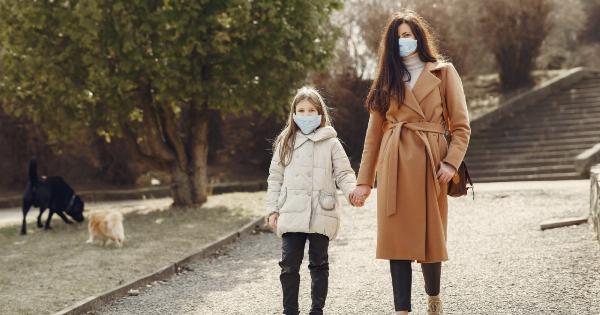When it comes to respiratory illnesses, two common conditions that often confuse people are colds and bronchitis.
Both can cause symptoms such as coughing, congestion, and chest discomfort, leading many to wonder if there is a connection between these two ailments. In this article, we will delve into the link between colds and bronchitis, exploring their causes, symptoms, and treatment options.
What Is a Cold?
A cold, also known as the common cold, is a viral infection that primarily affects the upper respiratory system. It is caused by the rhinovirus, although other viruses such as coronavirus or respiratory syncytial virus (RSV) may also be responsible.
Colds are highly contagious and can spread through respiratory droplets when an infected person coughs or sneezes.
Typical cold symptoms include a runny or stuffy nose, sneezing, sore throat, mild headache, and a low-grade fever (although fever is more common in children than in adults).
Most colds resolve within 7-10 days and usually do not require medical treatment.
Understanding Bronchitis
Bronchitis, on the other hand, is an inflammation of the bronchial tubes, which carry air to and from the lungs. There are two types of bronchitis: acute and chronic.
Acute bronchitis: This is usually caused by a viral or bacterial infection, similar to a cold. The most common virus responsible for acute bronchitis is the same rhinovirus that causes colds.
Acute bronchitis is characterized by a persistent cough that can last for several weeks, along with mucus production, chest discomfort, and low-grade fever.
Chronic bronchitis: This is a more serious condition and is often associated with long-term smoking or exposure to irritants like pollution or dust.
Chronic bronchitis is diagnosed when a person has a cough with mucus for at least three months in two consecutive years. It is a type of chronic obstructive pulmonary disease (COPD), which requires ongoing medical management.
The Relationship between Colds and Bronchitis
The common cold and bronchitis share several similarities, and there can be a clear progression from one to the other.
1. Cold as a precursor: Colds can be a predisposing factor for bronchitis. When a person has a cold, the infection often starts in the nose and throat, gradually spreading down to the bronchial tubes.
The viruses causing the cold can irritate and infect the lining of the bronchial tubes, leading to bronchitis symptoms.
2. Cold progressing to acute bronchitis: In some cases, a cold can develop into acute bronchitis. The initial viral infection weakens the respiratory system, making it more susceptible to additional bacterial infection.
Bacteria can then invade the bronchial tubes, resulting in prolonged cough, increased production of mucus, and other symptoms associated with bronchitis.
3. Chronic bronchitis and recurrent infections: For individuals with chronic bronchitis, recurrent colds can exacerbate their symptoms.
These individuals often have compromised respiratory systems, and when a cold virus attacks, it can further damage their already inflamed bronchial tubes, leading to more severe bronchitis symptoms.
Diagnosing Colds and Bronchitis
Both colds and bronchitis are diagnosed based on an individual’s symptoms and medical history. A physical examination may also be conducted to assess lung function and identify abnormalities like wheezing or crackling sounds.
In some cases, a healthcare provider may order additional tests, such as a throat swab or a sputum culture, to determine the presence of specific viruses or bacteria, especially if the symptoms are severe or prolonged.
Treating Colds and Bronchitis
Cold treatments: Cold symptoms are generally self-limiting and do not require specific medical treatment. Home remedies and over-the-counter medications can help alleviate symptoms and provide comfort.
These may include drinking plenty of fluids, resting, using nasal saline drops, and taking over-the-counter pain relievers or cough suppressants.
Bronchitis treatments: Acute bronchitis caused by a viral infection also does not typically require antibiotics. Similar to colds, symptomatic relief through home remedies and over-the-counter medicines is usually sufficient.
However, if a bacterial infection is suspected, a healthcare provider may prescribe antibiotics to prevent complications.
Chronic bronchitis, being a long-term condition, requires ongoing medical management.
Treatment often involves medications to open the airways (bronchodilators), steroids to reduce inflammation, and lifestyle changes such as quitting smoking and avoiding environmental irritants.
Prevention Strategies
Preventing colds and subsequent bronchitis is possible through several simple strategies:.
1. Good hygiene practices: Frequent handwashing, covering the mouth and nose when coughing or sneezing, and avoiding close contact with infected individuals can minimize the risk of virus transmission.
2. Vaccinations: Getting vaccinated against the influenza virus, along with other recommended vaccines like the pneumococcal vaccine, can minimize the chances of developing severe respiratory infections.
3. Environmental precautions: Reducing exposure to irritants like smoke, strong chemicals, and air pollution can help protect the respiratory system from damage.
Conclusion
In summary, while colds and bronchitis share similar symptoms and can be caused by the same viruses, they are distinct respiratory conditions.
Colds primarily affect the upper respiratory system, while acute and chronic bronchitis involve the inflammation of the bronchial tubes. Understanding the link between these two illnesses can help individuals recognize the progression from a cold to bronchitis and seek appropriate medical attention when necessary.
By practicing good hygiene, getting vaccinated, and taking necessary precautions, it is possible to reduce the risk of both colds and bronchitis.





























